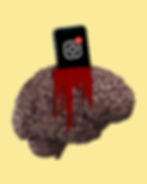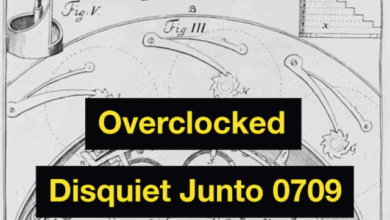When the Outside World Is So Noisy, You Just Want to Scream: “Please Make It Stop!”


I opened LinkedIn last week and felt it instantly. That subtle tightening in my chest. Not because of anything dramatic. Just the usual scroll. Posts promoting. DMs pitching services I didn’t ask for. A general hum of what seemed to me to be desperation. With all things considered, I get it. But it felt like noise. Not the kind you hear with your ears, but the kind that clutters your mind and drains your energy.
Why I Hit the Pause Button
The decision to step away for a week was guided by a few core promises I made to myself.
First, I promised long ago that I would never post just for the sake of posting. For years, I listened to the “experts” who insisted on daily engagement to remain “relevant.” That felt utterly empty. The truth is, my goal isn’t relevance. It’s about being of service and value. It’s about connecting. If I have nothing authentic or meaningful to share, silence is better than filler.
Second, I had to honor my own system. My brain was reaching a saturation point, a genuine state of information overload. And when that happens, the absolute best thing I can do for myself, and for everyone I interact with, is to take a breath. To simply sit in the quiet.
And finally, the third reason is something my nana used to say. It’s a classic: “Pami, if you don’t have anything nice to say, don’t say anything at all.” I’ve updated that mantra for the digital age: “If you don’t have anything authentic and real to share, don’t share anything at all.” I never want to “gunk” up anyone’s feed or head with inauthentic “stuff.” Your mental space deserves better.
This need to pause isn’t just a personal preference or a sign of burnout. It’s our brilliant, hard-working brains sending us an urgent signal.
And that brings me here. To this moment. To this blog post. Because the noise isn’t just annoying. It’s a mental traffic jam
What Noisy Actually Does to Our Brains
When I say “noise,” I don’t just mean sound. I mean the noisy relentless stream of input. Notifications. Headlines. Conversations. Expectations. Digital clutter. It’s the kind of noise that doesn’t just fill your ears. It floods your nervous system and can make you feel like you want to fight, fly, freeze or fawn.
Your brain is constantly scanning for threats. That’s its job. And the part responsible for this is called the amygdala. It’s tiny, almond-shaped, and incredibly powerful. Think of it as your internal security guard. It’s always on duty. Always watching. Always ready to sound the alarm.
In a calm environment, the amygdala fires when there’s real danger. A loud crash. A car swerving. A dog barking unexpectedly. But in today’s world, it’s being triggered by things that aren’t actually dangerous. A breaking news alert. A passive-aggressive email. A post that makes you feel small and incompetent. Your amygdala can’t tell the difference between a lion and an all-caps message from your best friend or client. It just senses urgency and reacts.
When this happens repeatedly, your body starts pumping out cortisol. That’s your stress hormone. It’s helpful in short bursts. But when it’s constantly flooding your system, it leads to emotional dysregulation. That’s why you may feel edgy. Foggy. Wired but tired. Essentially, your system is on constant, low-grade emergency alert, which is exhausting and completely drains your mental battery.
And when your mental battery is low, it’s hard to think clearly. Which leads me to the part of the brain that helps with that, your prefrontal cortex. This is the wise CEO of your brain. It’s responsible for decision-making, emotional regulation, planning, and focus. It’s the part that helps you say, “I need a break,” or “Let me take a breath before responding.”
But here’s the problem. When your amygdala is on high alert, your prefrontal cortex gets overwhelmed. It’s trying to manage the flood of input, regulate your emotions, and keep you functioning. That’s a lot of moving parts to manage. And it doesn’t take long before it starts to fatigue.
And aside from lack of clear thinking, when your prefrontal cortex is tired, two additional things can happen:
-
Emotional Reactivity Increases. Small things feel big. You may snap more easily. You may cry unexpectedly. You may feel like you’re failing, even when you’re not.
-
Decision Fatigue Sets In. You may struggle to choose. Even simple decisions feel hard. You may second-guess yourself. You may feel stuck.
This is the mental traffic jam. Your brain is trying to drive forward, but every lane is blocked. And the longer you stay in it, the more exhausted and frustrated you may begin to feel.
Why Pausing Isn’t Just Helpful. It’s Essential
When I stepped back from posting, it wasn’t because I didn’t have ideas. It was because my brain needed space. I needed to let my nervous system settle. I needed to stop feeding my brain the noise and start listening to my own internal signals.
And when I did, something shifted. My creativity returned and boy, did I miss her. My clarity came back to the party. My emotional bandwidth expanded. I felt more like myself again, instead of a woman with her hair on fire.
This isn’t just anecdotal. It’s neuroscience. When we remove overstimulation, the amygdala calms down. Cortisol production slows and our prefrontal cortex gets a chance to rest. That’s why your brain starts reconnecting with ideas and your thinking becomes clearer.
Not to mention, every time you choose calm over chaos, you’re building a new neural pathway. You’re training your brain that you are in control of your attention, not the noise.
Pausing isn’t a luxury. It’s a biological necessity. It’s how we reset. How we regulate. How we remember who we are outside of all the noise.
An Experiment to Try: The 20-Minute Digital Quiet
If you’re nodding along, feeling like your system is running on fumes, or that your hair is on fire, I have a gentle experiment for you to try. It’s called the 20-Minute Digital Quiet. It’s not a detox or a challenge. Think of it as more like a gift to your brain and nervous system.
-
Pick Your Time. Choose one 20-minute block today. Put it on your calendar. Make it non-negotiable.
-
Go Dark. Turn off notifications. Put your phone in another room. Close your laptop. Tell yourself, “The world will not burn down in 20 minutes.” It won’t, I promise.
-
Choose Your Quiet Anchor. Pick one low-demand, screen-free activity. Something that lets your mind wander and your body settle. Here are a few options:
-
A slow, unfocused walk. No destination. No music. Just movement.
-
Gazing out a window. Let your eyes soften. Watch the trees, the clouds, the light.
-
Gentle breath awareness. Sit quietly. Notice the inhale and exhale. No need to change it. Just observe.
-
-
Let Your System Reset. This isn’t about productivity. It’s about presence. You’re signaling to your brain: “We’re safe. There is no danger.”
What happens next is subtle but powerful. Your amygdala stands down. Your prefrontal cortex gets a break. Your nervous system shifts into a rest-and-digest state. And in that space, your creativity can come out of hiding. Your clarity can safely return. Your emotional resilience rebuilds.
Try this for one 20-minute block and then try to build it into your routine a few times a week. Notice what happens. You may find the shift in your mental clarity to be undeniable.
Finding Your Signal in the Static
The world isn’t going to get quieter. The social media and news platforms won’t slow down. The headlines won’t take a break. But you can.
You can choose to step back. To pause. To listen inward. To protect your mental bandwidth like it’s sacred. Because it is.
When you do, you’re not disconnecting or being lazy. You’re tuning in. You’re choosing clarity over clutter. Depth over noise. And that choice ripples outward. It can change how you show up. How you speak. How you create. How you connect.
So, here’s my question for you:
What’s one source of noise you’re ready to take a break from this week?
Tell me in the comments. I’d love to hear. Let’s make space for the quiet together.




